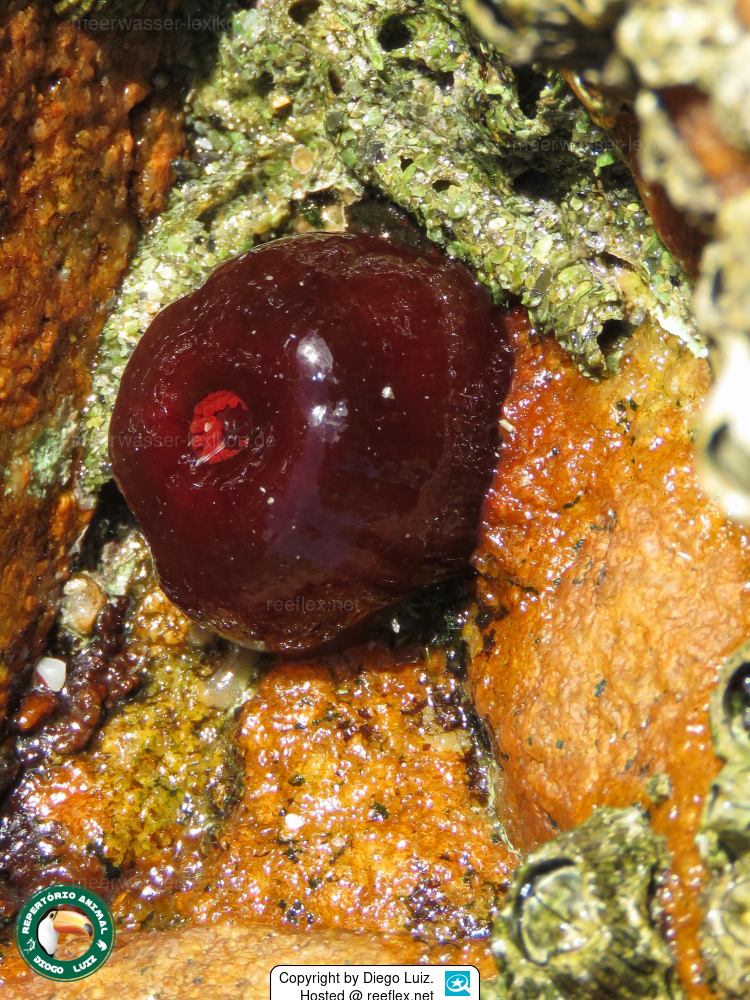Info
Actinia bermudensis has a smooth body with a blood-red or maroon colouration, the pedal disc of the anemone can grow up to four centimetres wide, but the rest of the body tapers to three centimetres.
Overall, the red anemone generally reaches a height of five centimetres, the oral disc bears between 96 and 140 particularly short and simple tentacles arranged in two irregular rows
Sea anemones, like many cnidarians, can form symbiotic relationships with photosynthetically active dinoflagellates, the zooxanthellae. This symbiosis is usually rewarding for both organisms, usually each receiving some kind of benefit, either as food, shelter or housecleaning.
However, it has been observed that Actinia bermudensis receives no benefit from the relationship it forms with zooxanthellae.
In fact, this symbiosis has been called parasitic because the zooxanthellae do not provide photosynthate for the anemone and are often digested when other sources of nutrients are lacking!
Although there are very few studies on Actinia bermudensis, it has been observed that Actinia equina can absorb nutrients, such as dissolved glucose and amino acids, directly through the ectoderm.
In addition, other food particles and prey have been observed to be taken up into the coelenteron to be extracellularly digested between the mesenteries
Reproduction:
The red anemone can reproduce asexually by longitudinal fission, and also give birth to sexually produced live young.
Caution: This anemone can produce a deadly toxin for defence, a secretion containing deadly peptides and proteins.
In addition, the red anemone has spherical acrorhagi with numerous nematocysts that are also used for defence.
Predator:
Despite the toxin being lethal to other marine life, it does not seem to affect the nudibranch Aeolidia papillosa, it loves to eat the anemone!
Synonyms:
Actinia bermudensis var. ferruginea Verrill, 1898
Actinia bermudensis var. prunicolor Verrill, 1907
Diplactis bermudensis McMurrich, 1889
Synonyms:
Actinia bermudensis var. ferruginea Verrill, 1898
Actinia bermudensis var. prunicolor Verrill, 1907
Diplactis bermudensis McMurrich, 1889







 Diego Luiz
Diego Luiz










